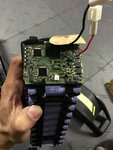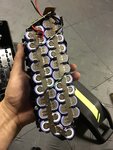My Haibike HardNine 1.0 is only 400Wh battery. It has three boost settings. Eco, Std. and High. My wife's Liv Amiti-E also has three boost settings and a 400Wh battery. She weighs a lot less than I do so her battery goes almost twice as far.
Our usual ride is 20 miles RT on a local rails-to-trails. We go one direction in Std. boost and return on High boost. We've been going out early in the mornings. Average air temp probably mid 50's to low 60's this summer. I'd usually get back to the car with 35 - 40% battery left.
It's getting cold here in the PNW. This morning it was about 48 deg.
I almost didn't get back to the car. The display started blinking at 10%. I went back to Std. boost and shifted down a few gears. Made it to the car with 7% left.
I'm gonna make a blanket out of some Reflectix material. Wrap the battery and see if it makes any difference. I sure hope the battery's not failing! It's only been cycled about 150 times.
Our usual ride is 20 miles RT on a local rails-to-trails. We go one direction in Std. boost and return on High boost. We've been going out early in the mornings. Average air temp probably mid 50's to low 60's this summer. I'd usually get back to the car with 35 - 40% battery left.
It's getting cold here in the PNW. This morning it was about 48 deg.
I almost didn't get back to the car. The display started blinking at 10%. I went back to Std. boost and shifted down a few gears. Made it to the car with 7% left.
I'm gonna make a blanket out of some Reflectix material. Wrap the battery and see if it makes any difference. I sure hope the battery's not failing! It's only been cycled about 150 times.

